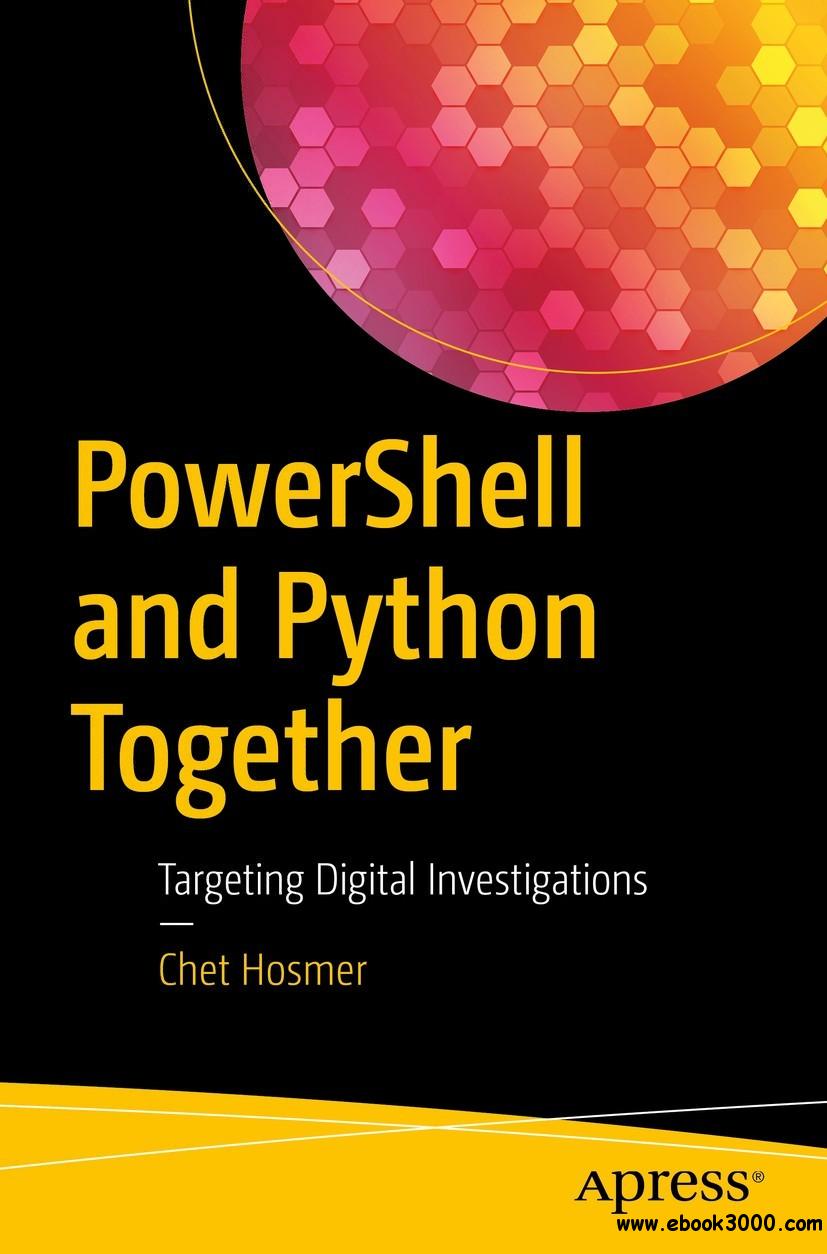[Book Review] PowerShell and Python Together: Targeting Digital Investigations
 cpuu
cpuu
Chet Hosmer, "PowerShell and Python Together: Targeting Digital Investigations", Apress, 2019
Introduction
"PowerShell and Python Together: Targeting Digital Investigations" by Chet Hosmer is an invaluable resource for those in the field of digital investigations and cybersecurity. Published by Apress in 2019, the book bridges the gap between Microsoft's PowerShell and the Python programming language, showcasing the combined capabilities of both to create advanced solutions for administrators, IT personnel, cyber response teams, and forensic investigators. It succinctly lays out practical approaches to digital investigation, incident response, and forensics, leveraging both PowerShell and Python. This book serves as a comprehensive guide for a wide range of individuals including system administrators, IT professionals, students, academics, and software developers keen on fortifying cybersecurity defenses.
Summary of the Book
Ch1. An Introduction to PowerShell for Investigators:
This introductory chapter provides a comprehensive overview of PowerShell, its fundamentals, and how it is used for digital investigations. It serves as a solid foundation for investigators, giving them a thorough understanding of PowerShell's robust command set and its practical implications in their work.Ch2. PowerShell Pipelining:
This chapter delves into the concept of PowerShell Pipelining, an efficient technique for chaining commands together in a pipeline to perform complex tasks. Readers are given detailed insights into how pipelining can enhance the speed and efficiency of their investigation processes.Ch3. PowerShell Scripting Targeting Investigation:
The focus in this chapter is on utilizing PowerShell for scripting targeted investigations. Readers are guided through the process of crafting scripts that can streamline and automate various aspects of their investigative tasks, thereby enhancing accuracy and productivity.Ch4. Python and Live Investigation/Acquisition:
This chapter introduces Python as a tool for conducting live investigations and data acquisition. It highlights Python's rich scripting environment and its capabilities in the rapid development of new tools for real-time digital investigation.Ch5. PowerShell/Python Investigation Example:
This chapter showcases real-world examples of PowerShell and Python being used together in investigations. It demonstrates how to leverage the combined strengths of these two languages to create highly effective solutions for cyber response teams and forensic investigators.Ch6. Launching Python from PowerShell:
Here, readers are taught how to launch Python scripts directly from PowerShell, an essential skill that allows for seamless integration and cooperation between the two scripting environments, resulting in a more versatile and powerful toolset for digital investigations.Ch7. Loose Ends and Future Considerations:
The final chapter addresses any remaining topics and discusses future considerations, paving the way for readers to explore beyond the book’s content. It leaves readers with thoughts on how to further apply and extend their knowledge of PowerShell and Python in the rapidly evolving field of digital investigations.
My Review Comments
PowerShell, a task automation and configuration management framework, was developed by Microsoft and initially launched in 2006 as a component of Windows. Since its advent, PowerShell has been instrumental in system administration, offering a powerful command-line interface primarily designed for Windows systems. Its open-source transition in 2016 allowed for a broader reach, extending its support to platforms like macOS and Linux. Built upon the .NET framework, PowerShell replaced the traditional command prompt in contemporary Windows versions, transforming into an indispensable tool for Windows administrators. The central aim of PowerShell is to create a unified, extensible experience for managing various systems, thereby simplifying complex tasks and refining administrative workflows.
In the context of Windows digital forensics, PowerShell presents as a valuable instrument. Equipped with numerous features and modules, it facilitates the automation of data collection and analysis processes intrinsic to forensic investigations of Windows systems. Functions extend to gathering system information and event logs, network data collection and analysis, targeted data retrieval from voluminous datasets, and automating the overall forensic data collection and analysis procedure. However, it is pertinent to highlight that PowerShell constitutes merely one element in the digital forensics toolbox, and its efficacy is contingent upon the unique demands of each forensic investigation. Recognizing the limitations and potential artifacts associated with PowerShell's forensic use is equally crucial.
Chet Hosmer's work provides a comprehensive guide to utilizing PowerShell within digital forensics. The publication delves into advanced methodologies, such as integrating and applying Python programming in conjunction with PowerShell. This fusion allows readers to devise their own custom tools, proving essential for thorough digital forensic investigations.
Subscribe to my newsletter
Read articles from cpuu directly inside your inbox. Subscribe to the newsletter, and don't miss out.
Written by
